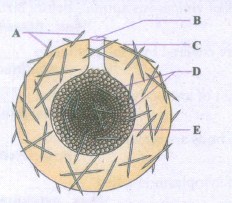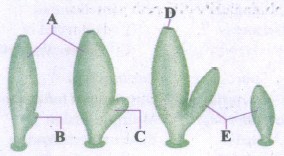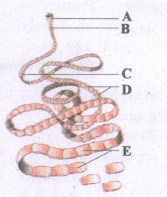- State Board
-
12th Standard
-

Biology
-

Computer Applications
-

Computer Science
-

Business Maths and Statistics
-

Commerce
-

Economics
-

Maths
-

Chemistry
-

Physics
-

Computer Technology
-

History
-

Accountancy
-

Tamil
-

Maths
-

Chemistry
-

Physics
-

Biology
-

Computer Science
-

Business Maths and Statistics
-

Economics
-

Commerce
-

Accountancy
-

History
-

Computer Applications
-

Computer Technology
-

English
12th Standard stateboard question papers & Study material
தமிழ் Subjects
English Subjects
-
-
11th Standard
-

Maths
-

Biology
-

உயிரியல் - தாவரவியல்
-

Economics
-

Physics
-

Chemistry
-

History
-

Business Maths and Statistics
-

Computer Science
-

Accountancy
-

Commerce
-

Computer Applications
-

Computer Technology
-

Tamil
-

Maths
-

Commerce
-

Economics
-

Biology
-

Business Maths and Statistics
-

Accountancy
-

Computer Science
-

Physics
-

Chemistry
-

Computer Applications
-

History
-

Computer Technology
-

Tamil
-

English
11th Standard stateboard question papers & Study material
தமிழ் Subjects
English Subjects
-
-
9th Standard
-

-

-

-

-

-

-

Maths
-

Science
-

Social Science
-

Maths
-

Science
-

Social Science
9th Standard stateboard question papers & Study material
தமிழ் Subjects
English Subjects
-
-
6th Standard
-

Maths
-

Science
-

Social Science
-

Maths
-

Science
-

Social Science
6th Standard stateboard question papers & Study material
தமிழ் Subjects
English Subjects
-
-
10th Standard
-

Maths
-

Science
-

Social Science
-

Tamil
-

Maths
-

Science
-

Social Science
-

English
-

English
10th Standard stateboard question papers & Study material
தமிழ் Subjects
English Subjects
-
-
7th Standard
-

Maths
-

Science
-

Maths
-

Science
-

Social Science
7th Standard stateboard question papers & Study material
தமிழ் Subjects
English Subjects
-
-
8th Standard
-

கணிதம் - old
-

Science
-

Social Science
-

கணிதம்
-

Maths
-

Science
-

Social Science
8th Standard stateboard question papers & Study material
தமிழ் Subjects
English Subjects
-
-
12th Standard
- CBSE Board
-
12th Standard CBSE
-

Biology
-

Chemistry
-

Physics
-

Maths
-

Accountancy
-

Business Studies
-

Economics
-

Introductory Micro and Macroeconomics
-

Computer Science
-

Geography
-

English
-

History
-

Indian Society
-

Physical Education
-

Sociology
-

Political Science
-

Engineering Graphics
-

Bio Technology
-

Entrepreneurship
-

Hindi Elective
-

Home Science
-

Legal Studies
-

Psychology
-

Hindi Core
-

Tamil
12th Standard CBSE Subject Question Paper & Study Material
-
-
11th Standard CBSE
-

Physics
-

Mathematics
-

Chemistry
-

Biology
-

Economics
-

Business Studies
-

Accountancy
-

Computer Science
-

English
-

Geography
-

History
-

Physical Education
-

Psychology
-

Sociology
-

Bio Technology
-

Enterprenership
-

Hindi
-

Home Science
-

Political Science
-

Applied Mathematics
11th Standard CBSE Subject Question Paper & Study Material
-
- 10th Standard CBSE
-
9th Standard CBSE
-

Social Science
-

Mathematics
-

Science
-

English
-

Hindi
9th Standard CBSE Subject Question Paper & Study Material
-
-
8th Standard CBSE
-

Social Science
-

Science
-

Mathematics
-

English
8th Standard CBSE Subject Question Paper & Study Material
-
-
7th Standard CBSE
-

Social Science
-

Science
-

Mathematics
-

English
7th Standard CBSE Subject Question Paper & Study Material
-
-
6th Standard CBSE
-

Social Science
-

Science
-

Mathematics
-

English
6th Standard CBSE Subject Question Paper & Study Material
-
-
12th Standard CBSE
- Free Online Test
- News
- Study Materials
-
Students
-

Stateboard Tamil Nadu
-

CBSE Board
-

Free Online Tests
-

Educational News
-

Scholarships
-

Entrance Exams India
-

Video Materials
Study Materials , News and Scholarships
-
-
Students

Biology 12th standard english medium frequently asked one mark questions Jun-28 , 2019
frequently asked one mark questions
frequently asked one mark questions
12th Standard
-
Reg.No. :
Biology
Dont scribble
Time :
00:20:00 Hrs
Total Marks :
20
-
The gravid proglottids are cut off from the parent body in ______
(a)Tapeworm (Taenia solium)
(b)Liver fluke
(c)Planaria
(d)Blood fluke
-
Regeneration was first studied by _______
(a)A.G. Tansley
(b)Charles Bonnet
(c)Abraham Trembley
(d)Walter Gilbert
-
Regeneration was first studied in _______
(a)star fish
(b)Planaria
(c)Hydra
(d)Aurelia
-
Starfish shown ______ type of regeneration.
(a)epimorphosis - reparative
(b)epimorphosis (restorative)
(c)morphallaxis
(d)paedogenesis
-
The sexual union of young individuals produced immediately after the division of the parent Cell is called _____
(a)Paedogamy
(b)hologamy
(c)merogamy
(d)isogamy
-
______ refers to the fusion of small sized, morphologically different gametes.
(a)Isogamy
(b)Hologamy
(c)Paedogamy
(d)Merogamy
-
Fusion of morphologically and physiologically similar gametes is called ______
(a)anisogamy
(b)hologamy
(c)isogamy
(d)merogamy
-
Exchange of certain amount of nuclear material during sexual reproduction is called _______
(a)strobilation
(b)conjugation
(c)pedal laceration
(d)sporulation
-
Paedogenetic parthenogenesis is seen in ______
(a)planula larvae of enidarians
(b)Cydippid larvae of pleurobranchia
(c)Redia larvae of liver fluke
(d)Trochophore larvae of Annelids
-
In _____ types of natural parthenogenesis only females are produced.
(a)Thelytoky
(b)Arrhenotoky
(c)Amphitoky
(d)Arrhenotoky
-
______ is a process by which the proglottids are cut off from the tapeworm.
(a)Apolysis
(b)pedal laceration
(c)budding
(d)plasmotomy
-
In _____ types of parthenogenesis egg can develop into individuals of any sex.
(a)Thelytoky
(b)paedogenesis
(c)Amphitoky
(d)Arrhenotoky
-

Identify the correct option to label the diagram
1 - Archaeocytes
2 - Inner membrane
3 - Micropyle
4 - Outer membrane
5 - Monaxonspicules(a)1-A 2-D 3-B 4-C 5-E
(b)1-C 2-B 3-A 4-E 5-D
(c)1-D 2-E 3-B 4-C 5-A
(d)1-A 2-E 3-D 4-B 5-C
-

Identify the correct option to label the diagram
1 - Bud forming
2 - Osculum
3 - Bud growing
4 - Daughter individual
5 - Individual parent(a)1-A 2-D 3-B 4-C 5-E
(b)1-B 2-D 3-C 4-E 5-A
(c)1-D 2-E 3-B 4-C 5-A
(d)1-A 2-E 3-D 4-B 5-C
-

Identify the correct option to label the diagram Identify the structure
1- Immature proglottids
2 - Gravid proglottids
3 - Scolex
4 - Mature proglottids
5 - Neck(a)1-C 2-E 3-A 4-D 5-B
(b)1-B 2-D 3-C 4-E 5-A
(c)1-D 2-E 3-B 4-C 5-A
(d)1-A 2-E 3-D 4-B 5-C
-
"Nothing lives forever, but life continues". What does it mean?
(a)Older dies but new ones are produced by reproduction
(b)Nothing can produce without death
(c)Death has nothing to do with the continuation of life
(d)Parthenogenesis is must for sexual reproduction
-
A few statements describing certain features of reproduction are given below. Select the options that are true for both sexual and asexual reproduction from the options given:
(i) Gametic fusion takes place
(ii) Transfer of genetic material takes place
(iii) Reduction division takes place
(iv) Progeny have some resemblance, with parents(a)i and ii
(b)ii and iii
(c)ii and iv
(d)i and ii
-
A few statements with regard to sexual reproduction are given below:
i. Sexual reproduction does not always require two individuals
ii. Sexual reproduction generally involves gametic fusion
iii. Meiosis never occurs during sexual reproduction
iv. External fertilization is a rule during sexual reproduction
Choose the correct statements from the options below:(a)i and iv
(b)i and ii
(c)ii and iii
(d)i and iv
-
Given below, are a few statements related to external fertilization. Choose the correct statements:
i. The male and female gametes are formed and released simultaneously
ii. Only a few gametes are released into the medium
iii. Water is the medium in a majority of organism exhibiting external fertilization
iv. Offspring formed as a result of external fertilization have better chance of survival than those formed inside the organism(a)iii and iv
(b)i and iii
(c)ii and iv
(d)i and iv
-
Which of the following statements, support the view that elaborate sexual reproductive process develops much later in the organic evolution?
i. Lower groups of organisms have simpler body design
ii. Asexual reproduction is common- in lower groups
iii. Asexual reproduction is common in higher groups of organisms
iv. The high incidence of sexual reproduction is in angiosperms and vertebrates.(a)i, ii and iii
(b)i, iii and iv
(c)i, ii and iv
(d)ii, iii and iv
Part - A
Answer each question given below
20 x 1 = 20






 12th Standard Biology Syllabus
12th Standard Biology Syllabus  12th Standard Biology Study Materials
12th Standard Biology Study Materials 12th Standard Biology MCQ Practise Tests
12th Standard Biology MCQ Practise Tests 

Reviews & Comments about Biology 12th standard english medium frequently asked one mark questions
Write your Comment